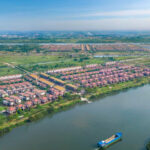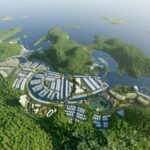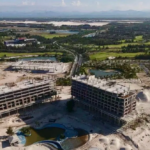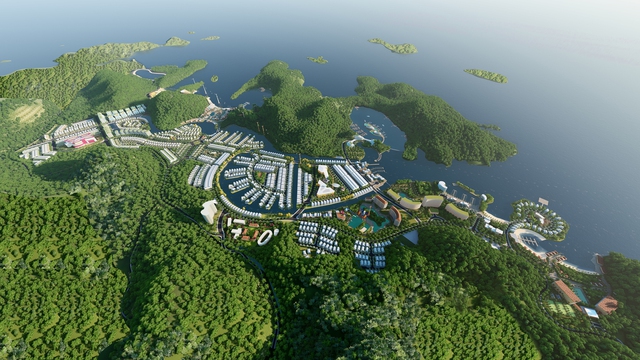
The Cát Bà Amatina project is a large-scale development located on Cát Bà Island, known for its breathtaking scenery and natural beauty.
The project is led by Vinaconex ITC, a prominent real estate developer, with a vision to create a world-class tourist destination. The master plan encompasses seven resort areas featuring approximately 800 villas, two marinas, a cruise terminal, an international convention center, a commercial and service hub, sports facilities, multi-functional entertainment venues, and a collection of five-star and four-star hotels.
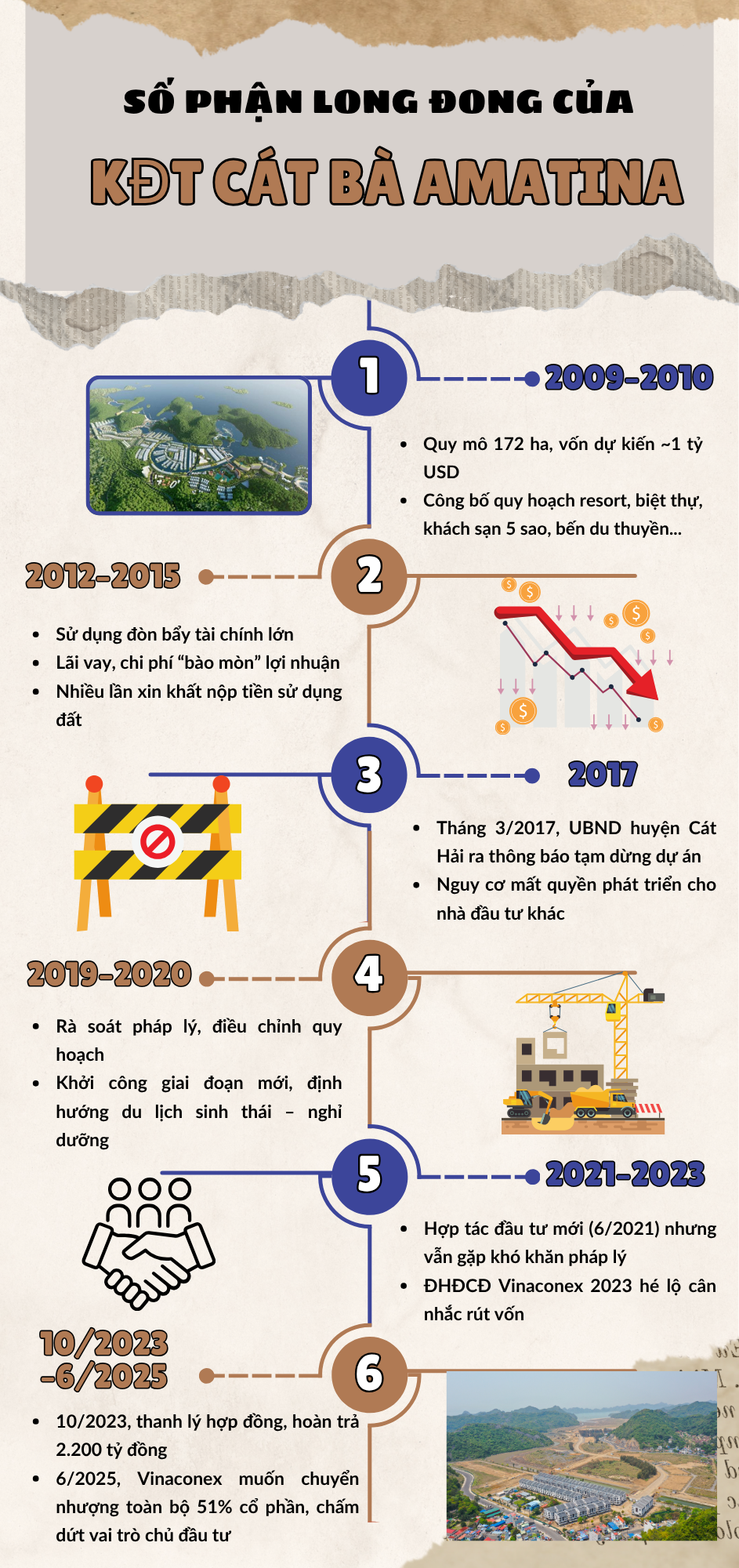
A timeline of key events in the history of the Cát Bà Amatina project.
2009 – 2010: Vinaconex ITC initially sold 95% of the villas in the Tùng Thu and Bazzar Avenue areas, generating significant interest. However, the company faced financial challenges due to overextension, high financial leverage, and an unexpected freeze in the real estate market, leading to a halt in project development.
From 2012: Vinaconex ITC struggled with consistent losses or minimal profits due to interest expenses and guarantees related to the Cát Bà Amatina project. The company repeatedly delayed land use payments to the Haiphong People’s Committee and sought permission to sell land plots with technical infrastructure to alleviate financial strain.
Despite these efforts, the project remained stagnant. On March 2, 2017, facing prolonged delays and the potential involvement of another investor, the People’s Committee of Cat Hai District issued Notification No. 54/TB-UBND, temporarily suspending Vinaconex ITC’s implementation of the project.
In response, Vinaconex ITC sent consecutive dispatches to the Haiphong Party Committee, pledging to address issues and regain the right to continue the project’s development.
Late 2020: The Cát Bà Amatina project was officially restarted with an initial investment of approximately VND 10,941 billion, expected to increase to USD 1 billion. The project’s focus shifted towards eco-tourism and cultural tourism, aiming to capitalize on Cát Bà Island’s natural attractions.
Upon completion, anticipated by 2025, the development will feature premium resorts, water and island villas, five-star hotels and condotels, a marina, indoor and outdoor entertainment areas, and nature exploration services in Ha Long Bay and Cat Ba National Park.
However, just three years later, the project faced another setback when Vinaconex, a major stakeholder, decided to withdraw its investment.
October 2023: The Board of Directors of Vinaconex ITC resolved to terminate and prematurely liquidate the investment cooperation contract signed on June 10, 2021, with Vinaconex regarding the CT02 subdivision and associated infrastructure. Vinaconex ITC will reacquire the mortgaged assets from the credit institution and repay Vinaconex VND 2,200 billion within 90 days from September 30, 2023. Vinaconex, in turn, will coordinate with credit institutions to release the mortgaged assets belonging to Vinaconex ITC.
This withdrawal strategy was hinted at during the Vinaconex Annual General Meeting in April 2023, where the potential challenges and market difficulties were acknowledged.
January 23, 2024: Mr. Dao Ngoc Thanh, Chairman of the Board of Directors of Vinaconex ITC, submitted his resignation due to personal reasons, marking another turning point for the project’s future.
Most recently, on June 30, 2025, Vinaconex approved the transfer of its capital contribution in its subsidiary. The Board of Directors issued a decision to approve the transfer of 107.1 million shares, equivalent to 51% of the charter capital, in Vinaconex ITC.
The minimum transfer price was set at VND 48,000 per share, meaning Vinaconex would receive a minimum of VND 5,140.8 billion if the transaction is successful.
According to the Annual General Meeting, the parent company, Vinaconex, has been in negotiations with potential partners for the sale of the Cát Bà Amatina project but has not yet signed any formal agreements. The developer aims to sell a significant portion of the project during 2025.
In the first quarter of 2025, Vinaconex ITC recorded no revenue, while incurring management expenses of VND 5.51 billion, resulting in a loss of VND 5.51 billion compared to a loss of VND 4.68 billion in the same period last year.
For 2025, Vinaconex ITC has set ambitious business plans after two consecutive years of losses. The company forecasts revenue of VND 1,793.3 billion and a pre-tax profit of VND 568.59 billion, a significant turnaround from the previous year’s loss of VND 21.83 billion.
The Grand Unveiling of Lotus 1: Elevating the Standard of Luxury Living in Bac Ninh
On June 28, 2025, the groundbreaking ceremony for Lotus 1, the newest addition to the Lotus Star complex, was held by TTBGroup JSC in Tho Xuong ward, Bac Giang city.
The Southern Real Estate Market Turns a New Leaf: A Year-End Review
The real estate market in the western districts of Ho Chi Minh City is buzzing with an intriguing trend: a tilt towards villa, townhouse, and villa project launches, while the east witnesses a surge in apartment developments. Infrastructure upgrades and merger planning are the catalysts driving the property market in these areas.
The Ultimate Central Coast Mega-Project: Unveiling the Unexpected Twists and Turns of FLC’s 2,000-Hectare Venture
The People’s Committee of Quang Binh province has approved a decision to convert forest land for the development of the FLC Quang Binh Resort Villa Project.
The Ultimate Urban Sanctuary: 1,769 Reservations and Counting
On June 29th, Sun Property, a proud member of the Sun Group, hosted an exclusive event in Ho Chi Minh City to unveil their latest masterpiece, Blanca City – a breathtaking oceanfront development. With nearly 2,000 guests in attendance, the event buzzed with excitement and energy, a testament to the allure of this “city by the sea” and a strong indication of the surging demand for property in the vibrant Vung Tau market.



























